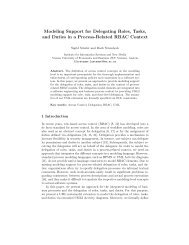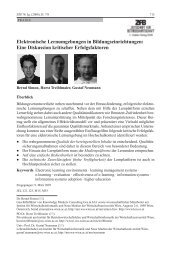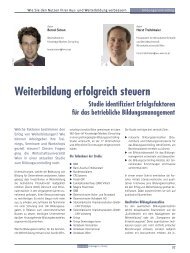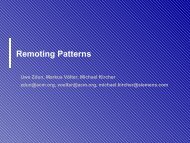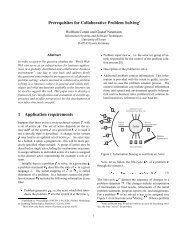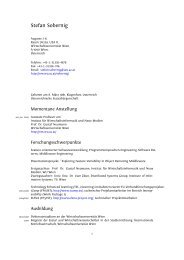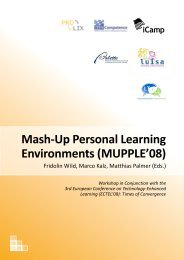Patterns of Tracing Software Structures and Dependencies
Patterns of Tracing Software Structures and Dependencies
Patterns of Tracing Software Structures and Dependencies
You also want an ePaper? Increase the reach of your titles
YUMPU automatically turns print PDFs into web optimized ePapers that Google loves.
• A TRACE CALLBACK invokes a callback whenever a certain runtime structure provided bythe INDIRECTION LAYER (as for instance an operation, object, or variable) is accessed. TRACECALLBACK mechanisms are part <strong>of</strong> the INDIRECTION LAYER implementation.• MESSAGE REDIRECTORS can be used to implement dynamic, object-oriented INDIRECTIONLAYERS: all invocations sent to the INDIRECTION LAYER have to pass the MESSAGE REDIRECTOR.It can thus be used to extract trace information for the invocations, either hard-coded orusing MESSAGE INTERCEPTORS.• A HOOK INJECTOR can be used for automatic insertion <strong>of</strong> callback hooks into a givenprogram text. It can be used to add a callback to each operation <strong>of</strong> the INDIRECTION LAYERcode that invokes a method <strong>of</strong> the hidden subsystem.INDIRECTION LAYER is a generalization for patterns wrapping an implementation layer with asymbolic language, such as object system layer [GNZ00b], microkernel [BMR + 96], virtualmachine [GMSM00], interpreter [GHJV94], <strong>and</strong> others. Note that these patterns are used inmany systems, <strong>of</strong>ten for other purposes than tracing structures or dependencies. Thus, if anexisting INDIRECTION LAYER is accessible, it can be (re-)used for extracting trace information.INDIRECTION LAYERS can be built in the programming language <strong>of</strong> the application logic, but alsoin any other language that can be integrated with the application logic language.With an INDIRECTION LAYER the trace information can be extracted from the running system.Usually monitoring can be turned on <strong>and</strong> <strong>of</strong>f; thus the penalties <strong>of</strong> observing trace informationcan be avoided in operational mode. To a certain extent structure information can be deduced aswell, e.g. with INTROSPECTION OPTIONS. However, the indirection causes a performance decrease<strong>and</strong> structures built for indirecting consume memory.In many cases an existing INDIRECTION LAYER can be extended to support extracting trace information(for instance in interpreted languages, the interpreter can be extended). But sometimesthere is no INDIRECTION LAYER or it is not accessible (for instance a closed virtual machine).Then an additional INDIRECTION LAYER has to be built. Using this additional INDIRECTION LAYERmight imply a change in the programming model <strong>of</strong> the application logic objects.Trace CallbackContextProblemProblemDetailsYou are using an INDIRECTION LAYER <strong>and</strong> you want to extract trace information from the runningprogram.You want to trace one or more specific structures <strong>of</strong> the runtime system. It is not enoughto interpret the source document texts, the program has to be executed <strong>and</strong> analyzed atruntime. As runtime structures can change dynamically, it might not be known until runtimewhich structures are to be traced. You want to avoid larger performance penaltiesdue to tracing. How to trace specific runtime structures generically <strong>and</strong> dynamically?Consider you are using a component that implements dynamic variable slots for objects inyour programming language – that is, variables that can be added <strong>and</strong> removed at runtime toany object. This component adds a slot table to each object, <strong>and</strong> h<strong>and</strong>les memory allocation,deallocation, <strong>and</strong> access <strong>of</strong> variable slots. You want to implement an automatic persistence



